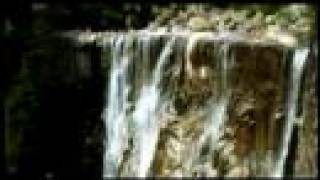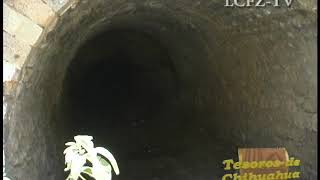Monday, 03 November, 2025г.
















Где искать: по сайтам Запорожской области, статьи, видео ролики
пример: покупка автомобиля в Запорожье
Copper Canyon (#3): Batopilas Canyon
The Copper Canyon is truly one of the Western Hemisphere's great scenic and cultural journeys. The Sierra Tarahumara (Copper Canyon) belongs on the wish list of most every traveler. It is fast becoming Mexico's most popular "soft-adventure" attraction while also catering to hardcore backpackers, day hikers, mountain bikers, bird watchers, historians, and naturalists. On a map the trek looks like a simple train trip between the Chihuahua, capital city of the state by the same name and the small city of Los Mochis in Sinaloa near the Sea of Cortez. In fact this journey showcases not only one of the world's great engineering feats, but also some of the world's most awesome scenery and the most primitive aboriginal culture left in North America. The name, "Copper Canyon" is used as a general reference to the Canyons. A more proper name might be "Sierra Tarahumara", since the Copper Canyon (Barranca del Cobre in Spanish) is but one of six massive gorges in the area covering 64,000 sq. kms (25,000 sq. miles). Also of note is the fact that copper was never mined in great quantities here. The term refers to the copper/green colored lichen that clings to the canyon walls. Furthermore, a main draw to the region is the rich indigenous Tarahumara culture.
This canyon system is four times larger than the Grand Canyon in the United States. Four of its six canyons are deeper than the Grand - some by over 1,000 feet. An incredible variety of ecosystems further distinguish the region. Highlands are home to snow-covered mountain peaks, sparkling lakes, and enormous stands of old-growth Ponderosa pine and oak. The area's plunging gorges sprout wild rives, towering waterfalls and sub-tropical forests. Semi-arid coastal plains to the west support large sugar cane and rich vegetable farms, while valleys to the eastern (Chihuahua) region are home to peach and apple orchards and vast grasslands. Complimenting the area's awesome natural attractions is the equally interested Tarahumara (Raramuri, as they called themselves) Indian culture. These semi-nomadic people number around 50,000, many are predominately cliff and cave dwellers eking out a meager substance from simple farming, ranching, and handicrafts. Men are noted for their remarkable running ability, competing in grueling races that stretch non-stop for over 100 miles at times.
Ciudad Batopilas ... Although there were various mining centers that were formed at the bottom of some canyons, none can compare with the mineral richness of the Batopilas Canyon. The veins of La Bufa and those of the town of Batopilas itself reached renown of a world level. Its mining towns and mines characterize and identify this canyon. In spite of the fact that the climate is extreme in the high regions of the canyon range, in the winter it is possible to admire a curious phenomenon - while the surrounding peaks are covered with snow the depths of the canyon are a subtropical or tropical climate year around. Due to this, towns like Batopilas have flora and fauna with many different characteristics than in the Sierras above. Oranges, papaya, mango, avocado are regular staples of the inhabitants. Batopilas is considered the "Treasure of the Sierra Madre" because of it's historic past and present beauty. Founded in 1709 as San Pedro de Batopilas when the Batopilas mines were discovered, the small pueblo slowly, but steadily flourished due to this mining activity.
Теги:
Mexico Copper Canyon Barranca del Cobre Basigochi La Bufa Tarahumara Batopilas Humira Basihuare Quirare Batopilas Canyon Travel Rozylowicz
Похожие видео
Мой аккаунт


 У вашего броузера проблема в совместимости с HTML5
У вашего броузера проблема в совместимости с HTML5


